Before you read on to learn how to weld stainless steel, it’s a good idea for you to learn a bit about the metal itself. Of course, that’s not entirely accurate: in fact, stainless steel isn’t a singular metal but an alloy. That is, it’s a mixture of steel (itself an alloy of iron and carbon) and a minimum of 11% chromium. The resultant stainless steel alloy is renowned for both its strength and its resistance to corrosion and tarnishing.
And the potential applications for stainless steel are practically limitless. You’ll find stainless steel as the primary component in everything from home kitchen appliances to industrial technology, literally everything including the kitchen sink!
Learn How to Weld Stainless Steel
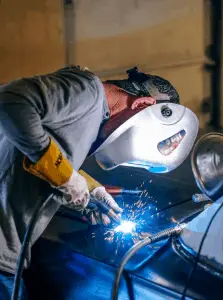
Now let’s get down to brass—or, perhaps stainless steel—tacks! You’re not here to learn about the various applications or composition of stainless steel. Odds are, if you’re reading this now, you already have an application or two in mind. No, you’re here to learn about stainless steel welding!
In this guide, we will cover the three primary methods for welding stainless steel. We’ll include an overview of preparation, filler metals, types of stainless steel, tips and tricks for the three methods, and then round things out at the end with our recommendation for the absolute best method of welding stainless steel.
Proper Welding Preparation
We’ll get into the details of how to prepare to weld stainless steel more specifically later. But before we get there, we thought it would be useful to review some essential welding preparation tips more generally, first. Proper welding preparation is a key element in saving you minutes, money, hassles, and headaches. The two main elements in welding prep are cleaning and part fit-up.
Cleaning
We’ll go into the process of cleaning stainless steel in a later section, but for now, let’s look at the importance of joint preparation and cleaning more generally. It’s crucial, regardless of the metal or alloy you are using as a base metal, to properly clean it, removing any remnants of oils, paint, dirt, or debris. Failure to clean the base material properly can result in issues like cracking, weld inclusions, slag entrapments, and otherwise weak or failure-prone weld joints.
Part Fit-Up
With any welding project, you want to make sure your component parts match up according to size. First, measure all parts that will be welded so you can be certain that they will match up perfectly. If you neglect this step, you might end up with a less-than-uniform joint and an inconsistent weld. Don’t rush this part! If you try to hurry through this step, you’ll wind up with misaligned parts and insufficient penetration of the base metal.
Filler Metals Make All the Difference
One of the most important aspects to any welding project, stainless steel included, is selecting the right filler metals. When it comes time to decide on which stainless steel welding wire or other filler metal to use, there are several things you need to keep in mind.
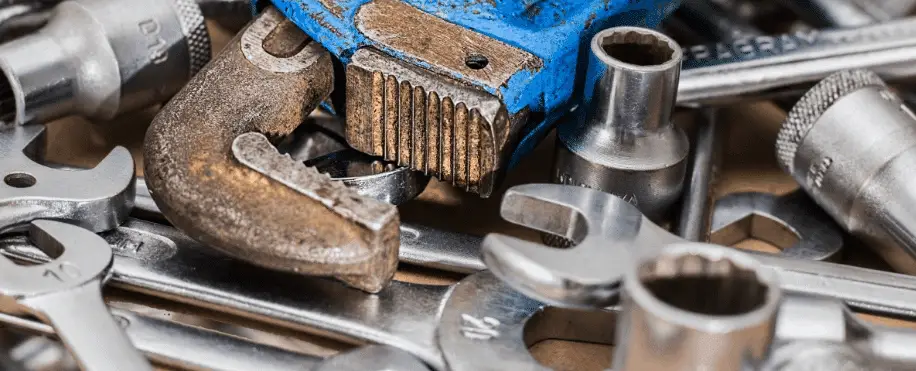
First, and by far most importantly, your filler metal should match the base metal you’re working with. This is as simple as matching the three-digit number on your base metal with that of your selected filler metal.
Next, consider the tensile strength of the filler metal. It should have the same or stronger tensile strength of your base metal.
Finally, take into account the general cleanliness and condition of your base metal. Some filler metals contain elements that can actually remove contaminants like rust, bringing them to the top of the weld. While this is not an excuse to skip the cleaning step of the weld prep process, it is an excellent option if you are working with sub-par base metals.
Types of Stainless Steel
There are five main types of stainless steel, but you’re most likely to encounter only three of them. We’ll go over these three types here, including a discussion of their attributes and common uses.
Austenitic Stainless Steel
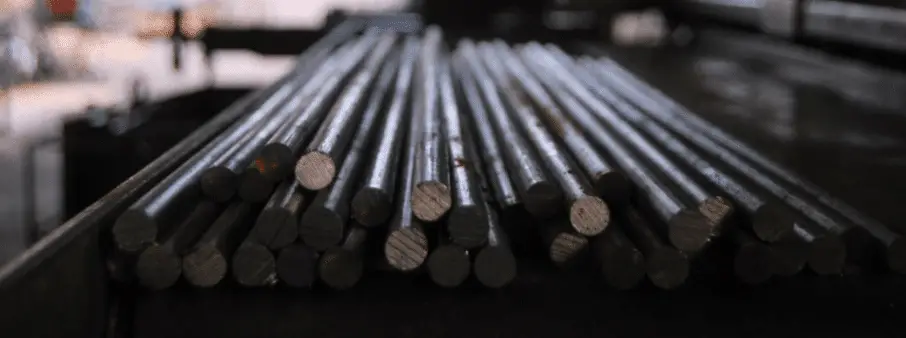
The most common type of stainless steel is Austenitic. It is a non-magnetic steel that is known for its high level of weldability. For this reason, it is often used in standard fabrication applications.
While generally more prone to stress corrosion cracking than other types, some Austenitic steels with higher nickel content sidestep this issue to a certain degree.
Note: Austenitic Stainless Steel cannot be hardened through heat treatment.
Martensitic Stainless Steel
Among the first stainless steels developed for commercial use, Martensitic Stainless Steel is a magnetic steel that can be hardened through quenching and tempering. Since its inception, it has most often been used in manufacturing cutlery, though it has also been used in engineering. Martensitic steels are moderately resistant to corrosion but rank lower with regard to formability and weldability.
Ferritic Stainless Steel
The least expensive of the big three, Ferritic Stainless Steel is a magnetic steel that is most often used in consumer products, such as auto parts. Ferritic stainless is highly ductile and quite formable, but it stands up poorly to high temperatures, relative to other stainless types. Ferritic steels are high in chromium and lower in carbon.
Note: Ferritic Stainless Steel cannot be hardened through heat treatment.
Preparing to Weld
The process of preparing to weld stainless steel is much the same as with welding any kind of metal or alloy, though there are certain important caveats. The following steps will walk you through this preparation to ensure you start your welding project on the right foot.
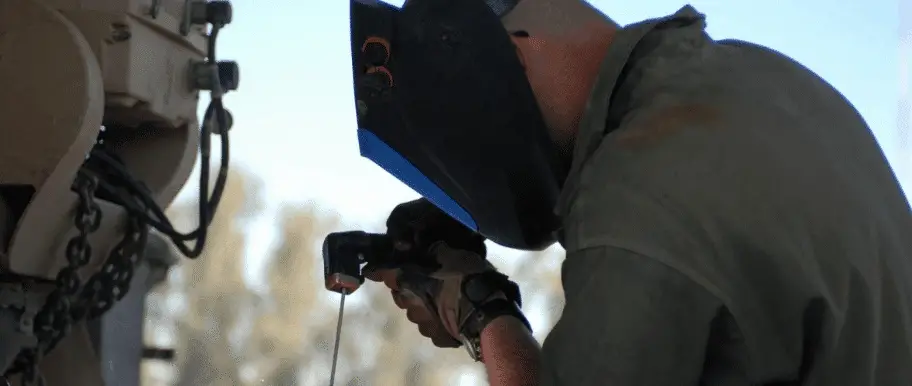
Safety First: Before you begin any welding project, make sure you have the proper safety gear. This includes gloves, a good welding helmet, and protective clothing. Also, ensure that all of your welding equipment is in safe, working condition and situated to give you room to work.
Dedicated Stainless Steel Tools: Round up the necessary tools for welding with stainless steel. It is crucial that you only use tools, like wire brushes, that are specifically designed and dedicated for use with stainless steel. Contaminating your workspace or metals with carbon metals will result in rusting.
Identify Base Metal and Select Joint Type: Though you’ve probably already done so, identify your base metal (Austenitic, Martensitic, or Ferritic) according to the three-digit number on the piece you’re using. If you can’t locate this number, you can always identify the base metal with a spark test.
Next, determine what kind of joint you will be welding. Here are just a few common joint types you might consider:
- Butt Joint: easiest, most affordable option; often used for piping
- Lap Joint: good for resistance spot welding; often used for temporary framing
- Corner Joint: creates strong welds; used for joining sheet metal
Clean the Stainless Steel: Using your dedicated wire brush and acetone, clean your base metal. Scrub with the grain, removing impurities from the metal. After scrubbing, wipe your base metal down with an acetone-coated rag to remove any lingering debris.
Secure Base Metal: The last thing to do before you get started on your welding project is to make sure that you have secured your base metal to your welding bench.
3 Common Methods for Welding Stainless Steel

While there are dozens of potential methods for welding stainless steel effectively, we’ve found that the following three methods tend to render the best results. The method you choose to use for your welding project will depend on the type of project you’re pursuing, the thickness of your base metals, the amount of money you want to spend, and the type of stainless steel you’ll be using.
We’ll refer to these factors as we go through each of the three common methods for welding stainless steel.
There are, of course, other methods you can use to effectively weld stainless steel. ARC welders, for instance, are a popular option for this task. You might also consider stick welding stainless steel. However, we won’t be discussing those methods in any detail in this article.
TIG Welding or Gas Tungsten Arc Welding
TIG welding stainless steel is probably the most common method used for welding with this durable alloy, though also the most difficult. If you already have a TIG welder, perhaps one of our recommendations for the best TIG welders or the top choices under $1000, then you will obviously go with this process. TIG welding (AKA Gas Tungsten Arc Welding) is a great option for stainless steel projects because of the relatively low heat required, making it the best solution for welding thin base metals.
Remember, stainless steel retains heat very efficiently, which makes the welding process a bit of a challenge. To avoid a brittle or warped weld, be mindful of controlling the amount of heat you use. To do so, it’s important to select the proper stainless steel welding rod. The thicker the filler metal, the more heat required for melting. You should ensure that you use a filler metal thinner in diameter than your base metal. As for the specifics, you should use roughly one amp of current per thousandth of an inch of base metal thickness.
Also, since molten stainless steel is particularly reactive, you must always have a steady supply of argon gas behind the weld. This will prevent the weld pool from reacting to the atmosphere.
Finally, when TIG welding stainless steel, you need to set your polarity for the DC electrode to negative.
Resistance or Spot Welding
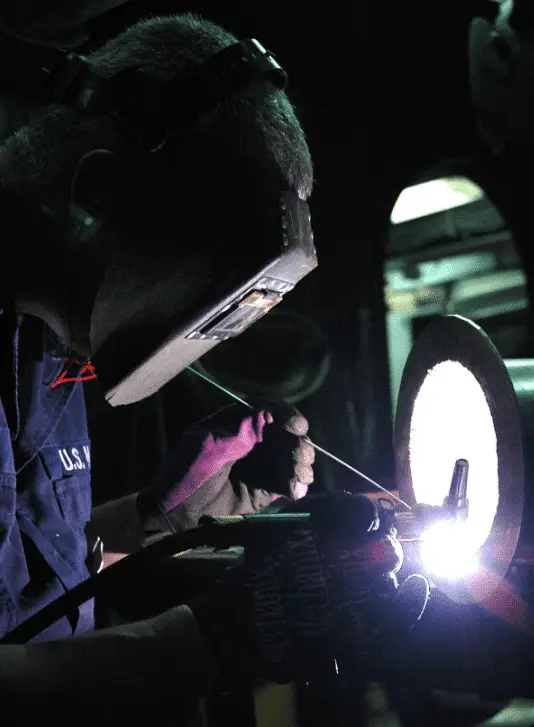
You might also consider using resistance welding (aka “spot welding”) to weld stainless steel. This is a decent welding method if your project involves joining thinner sheet metal.
It’s also a good choice if you plan on completing your stainless steel welding project on a tight budget, as resistance welding is often the most cost-effective method for joining stainless steel.
The process involves placing the sheets between the welding electrodes and applying pressure via an electric current. This method is an effective one for stainless steel welding because it works so well on metals that have low melting points.
The reason? The resistance method is designed to avoid distorting your base metal. Instead, it joins metal edges together through its electrical current.
The main difference between resistance welding and arc welding is that resistance welding is a type of solid state joining. Arc welding, on the other hand, is a type of liquid state joining (or, fusion welding). This means, for one thing, that resistance welding methods do not require the addition of a filler metal, making it a far more economical method if you’re on a budget.
The biggest upside to resistance welding, though, is probably the time it takes to complete. Unlike the more involved processes of arc welding methods, resistance welding tasks can be completed in mere minutes. A big reason for this is the relatively undemanding nature of the resistance welding process.
MIG Welding or Gas Metal AC Welding
Our third and final method for this guide focuses on MIG welding stainless steel. Here, we’ll go over some of the benefits and applications of joining stainless steel with MIG welders.
There are certainly many reasons why you might want to use the MIG welding process for joining stainless steel components. But the reason we like the most is that it is one of the easiest options for a beginner. The MIG process is fairly simple, requires less equipment, and results in very strong and attractive joints.

Further, it’s also a great option if you are welding components that include hard to reach places.
An important thing to note about MIG welding, though, is that this process absolutely requires clean materials. If you don’t use clean materials (or, rather, don’t clean them properly during the preparation process), you will not be happy with your results! The same goes with how to weld sheet metal.
Which Stainless Steel Welding Method Is Best?
So, what’s the bottom line? Which method should you use to weld stainless steel? Well, unfortunately, there’s no one-size-fits-all answer to that question. The truth is, as you might have expected, the best method to weld stainless steel depends almost entirely on what your goals are and what materials and equipment you have at your disposal. So, here are just a few quick suggestions to help you make your decision.
- If cost is a concern, you might choose the economical spot or resistance welding option.
- If you are working with thinner base materials, TIG welding is probably a good bet.
- If you’re inexperienced and want a more fool-proof method, you ought to go with the MIG method.
FAQs
1. What type of welder is used for stainless steel?
The only stainless steel welder that is acceptable is a MIG welder. When working with stainless steel, these machines are critical for producing reliable, solid welds. To get started, look for MIG welders that include essential components such as a welding gun and sample welding wire. Welding pistol.
2. Why welding of stainless steel is difficult?
Is stainless steel difficult to weld? Stainless steel conducts heat exceptionally well, making welding it slightly more complex, particularly for the inexperienced welder. When exposed to excessive welding heat, stainless steel can warp and even distort due to the elevated temperatures.
3. Can you weld stainless steel with normal MIG wire?
Yes, but stainless steel is steel that has been treated with Chromium and Nickel to make it more lustrous and resistant to rust. When stainless steel is welded with standard MIG wire, rust-prone steel is introduced into the weld joint.
4. Do you need special wire to weld stainless steel?
While you will need stainless steel MIG wire, the grade of wire you use will vary depending on the type of stainless steel base material being welded. Austenitic stainless steel wires are most commonly available in three grades: 308, 309, and 316.
5. Will stainless steel rust after welding?
As integral components of the welding process, pressure and heat are directly responsible for rusting on stainless steel surfaces. In addition, as the steel structure changes due to melting, free iron particles accumulate on the surface, where they react with oxygen and cause corrosion.

